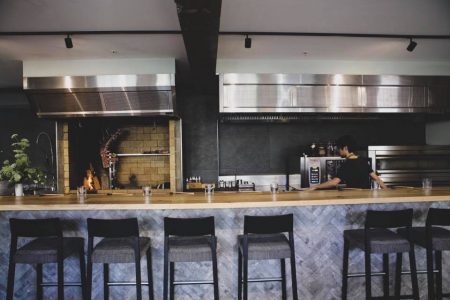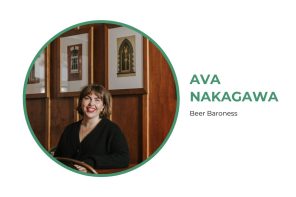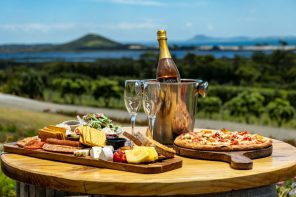Lessons from Metro Peugeot’s Restaurant of the Year Award
This year, the Supreme Winner of the Metro Peugeot Restaurant of the Year award went to Pasture. The small and intimate six-seater restaurant offered an experience that other places were unable to match. It’s evident that Pasture has always been excellent—it won the Best New Restaurant award in 2017—but as the judges said, it’s now genre-defining.
What qualifies Pasture as Auckland’s best restaurant, though? Is it almost unfair in a way, to put a six-seater restaurant against traditional restaurants which can serve many more customers each night and are sometimes open all day?

Pasture's intimate dining experience.
The awards aim to celebrate the excellence of Auckland’s dining scene, and the panel of judges considered more than 100 places before narrowing it down to 50 after months of deliberation. Every aspect of the dining experience was considered in the restaurants' final score: the food, the service, the drinks, the fit out, the music, the atmosphere, and the diners’ desire to return. On top of this, however, restaurants were judged based on their merit—if a place wanted to be classified as fine dining, that is how it was judged, a bistro was judged as a bistro.
To compare the top two restaurants, Pasture, and Cazador, we are comparing chalk and cheese. Pasture seats six diners at a time and can turn that number twice in one night. They are open five days a week, from Wednesday to Sunday. In comparison, Cazador can sit 45 people but are only open four days a week, from Wednesday to Saturday. Pasture’s menu is seasonal, and guests are served a tasting meal with an optional drink pairing. Comparatively, Cazador offers an a la carte menu, as well as a ‘Feast’ option, where the chefs choose three dishes. On top of this, there is also a three-course express menu that allows the diner more choice. While the food and dining experience must speak for itself at Pasture, it is interesting that a six-seated restaurant can fall into a category that compares it to places that can seat more than five times the amount of customers per seating. It’s no wonder that the chefs at Pasture can put extra time into perfecting their meals—they serve what they like to the customer. Furthermore, the pressure to provide for six people is already a lot less than having to prepare individual meals for up to 45 guests, at Cazador, for example. Whether or not the dining experience is the same, or wildly different, comparing a kitchen that has to deal with catering to six diners at a time is not the same as a standard kitchen. With the increased amount of meals going out at larger restaurants, there is an increased chance of inconsistency and more pressure involved in churning out more meals, quicker.
However, it's important to note similarities that are shared amongst the top restaurants. What makes each dining experience unique and desirable? For a start, certain things are inherently necessary for most good restaurants—quality and freshness of their ingredients, a welcoming décor, top-notch service, and of course, delicious food. But many places could arguably tick these boxes. What distinguishes the good from the great?
A great restaurant isn’t usually one people can drop-in and grab a quick bite to eat. A great restaurant is a destination, an experience that transcends the food, or the premises alone. Wrapping diners in an inviting atmosphere that plays the right music with the proper lighting is just the beginning. A welcoming steward guiding a diner through the menus perhaps leading them to a delicately chosen drink—and so forth. Food is an expression of art, and a chef that can capture their essence, and the beauty of flavour and texture on a plate will have returning guests. The experience that Pasture offers, an intimate, tableless restaurant in which guests are encouraged to interact with the chefs who are cooking within arm’s length from the customers they are serving. There are no waitstaff, and it’s an encounter that diners will struggle to find elsewhere.
Not every chef will have an appropriate kitchen or team to serve food on such a small-scale and personal level, but that isn’t to say that there aren’t other ways to do it. Diners, especially ones that look at food as more than just sustenance, recognise authenticity. If a chef can put themselves into their meals, customers will realise that. Dariush Lolaiy, chef and co-owner of Cazador, butchers his meat at the restaurant. On top of that, the inspiration for his meals come from his passion for travelling and hunting background. Furthermore, his parents had initially opened Cazador, so there is a sense of family engrained into the Cazador experience.

Cazador, interior.
Ultimately, there are a plethora of reasons that contribute to a customers experience. One customer may find satisfaction in something that another does not. Perhaps the décor at Cazador, with its walls adorned with taxidermy and old paintings wouldn’t sit as well with a particular person. It’s nearly impossible to get everything 100 percent perfect, but that’s where the consistency and the experience that each customer has each night comes into it. Successful chefs are the ones that have been able to create something otherworldly for their customers, something that combines taste, visual appeal, warmth and excellent service. Although there is perhaps disparity between the restaurant capacity at Pasture compared to some of the other contenders, the experience at Pasture left every one of the judges certain that it was worthy of the Metro Peugeot Restaurant of the Year winners title.






